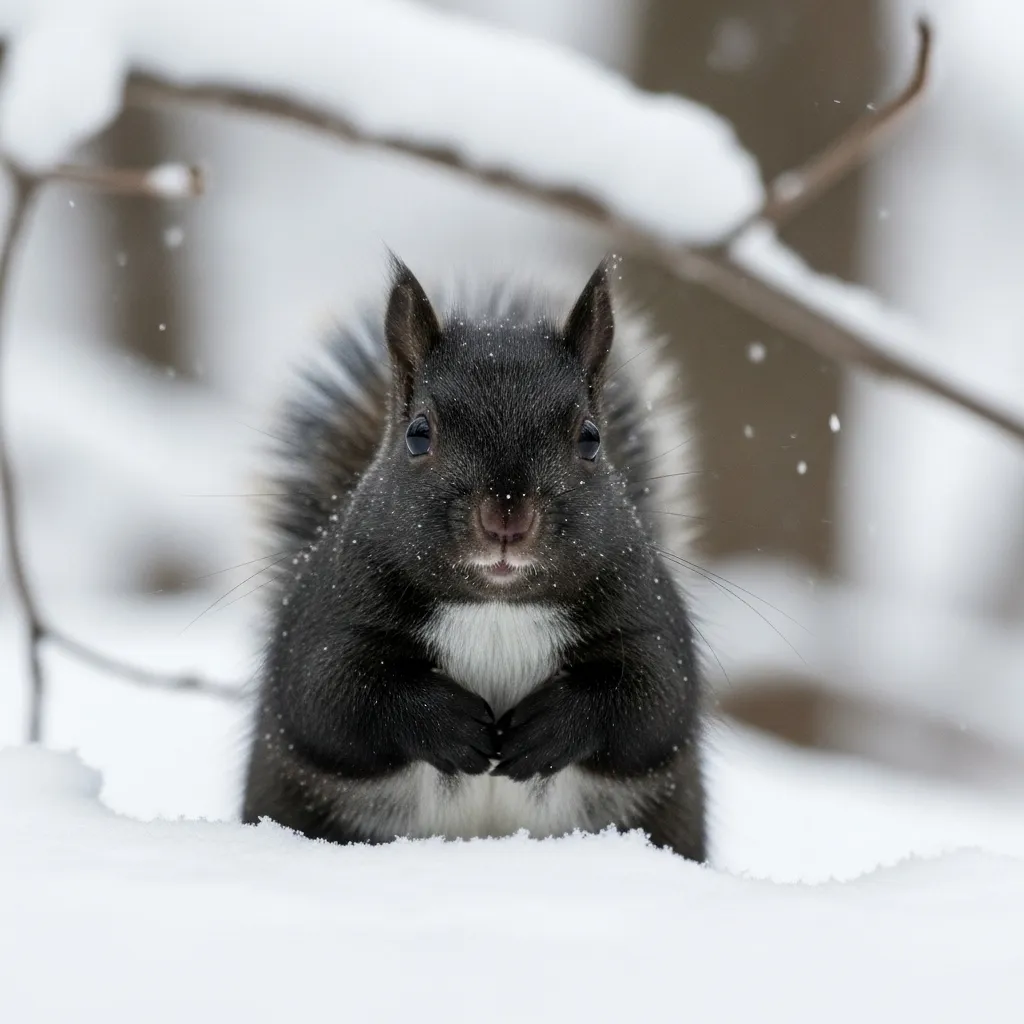
6. Not All “Gray” Squirrels are Gray
While the species is named the Eastern Gray Squirrel, its fur color can be surprisingly variable. One of the most striking variations is melanism, which results in an all-black coat. These “black squirrels” are not a separate species; they are simply gray squirrels with a genetic mutation that causes an excess of dark pigment (melanin) in their fur.
This genetic trait is thought to have originated in the gray squirrel’s northern range. In cold, dense forests, a black coat may have offered a thermal advantage, absorbing more solar radiation to help the squirrel stay warm. It may also have provided better camouflage against the dark bark of trees in old-growth forests. As forests were cleared, the advantage shifted toward the grizzled gray coat, which offers better camouflage in open, sun-dappled woodlands.
Today, black squirrels are common in certain regions, including parts of the upper Midwest, Ontario, Quebec, and some northeastern states. In some cities, like Kent, Ohio, and Washington, D.C., black morphs were intentionally introduced and have become the dominant color form, creating unique urban populations.
On the opposite end of the spectrum is albinism, a genetic condition resulting in a complete lack of pigment. True albino squirrels have white fur and pink eyes. Leucism is a similar condition that causes white fur but with normal dark eyes. White squirrels are extremely rare in the wild because their bright coat makes them highly visible to predators. However, a few towns, such as Olney, Illinois, and Marionville, Missouri, are famous for their protected populations of white squirrels, where they have become a source of civic pride.















